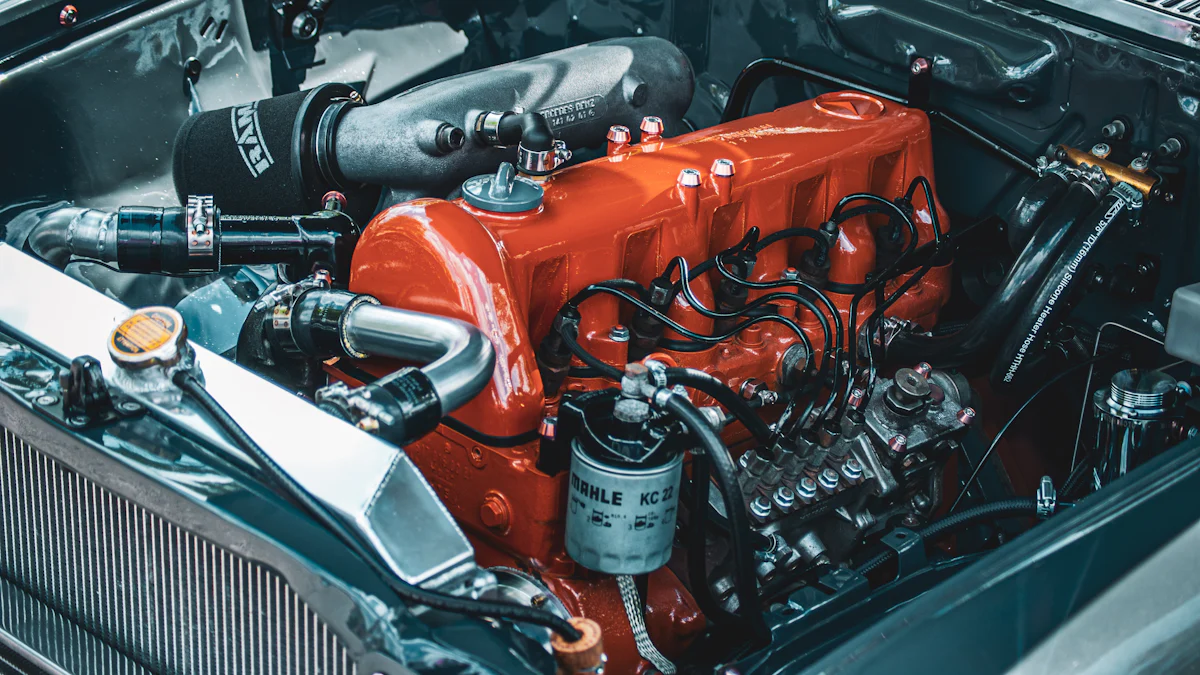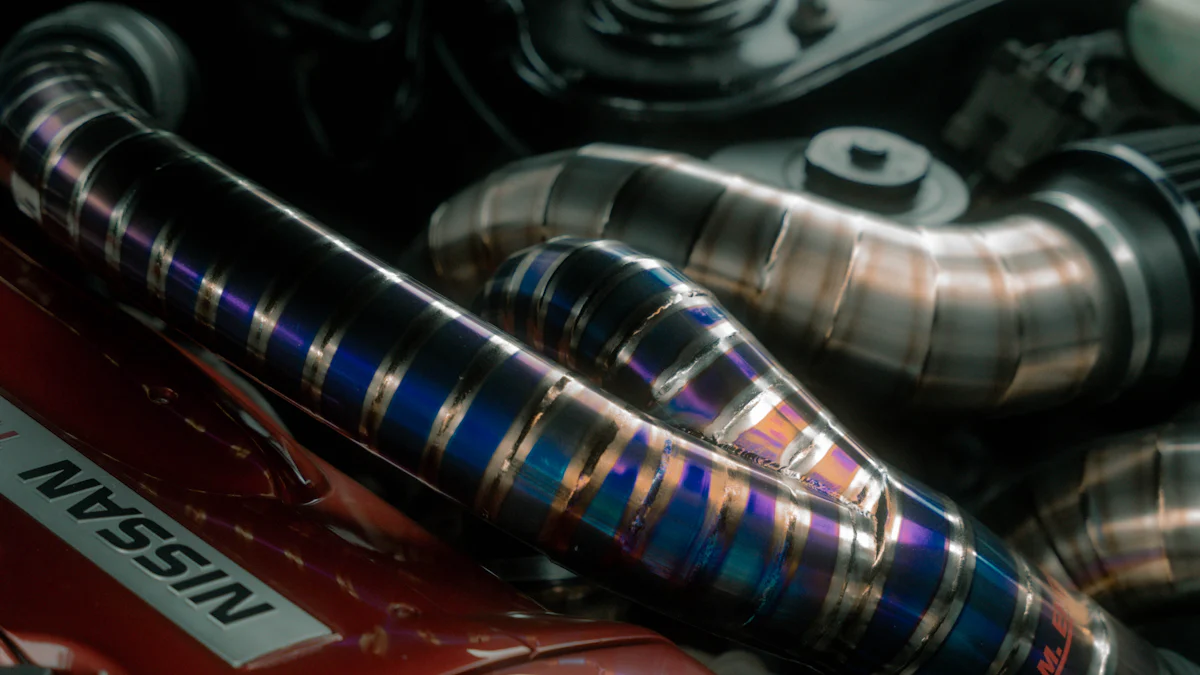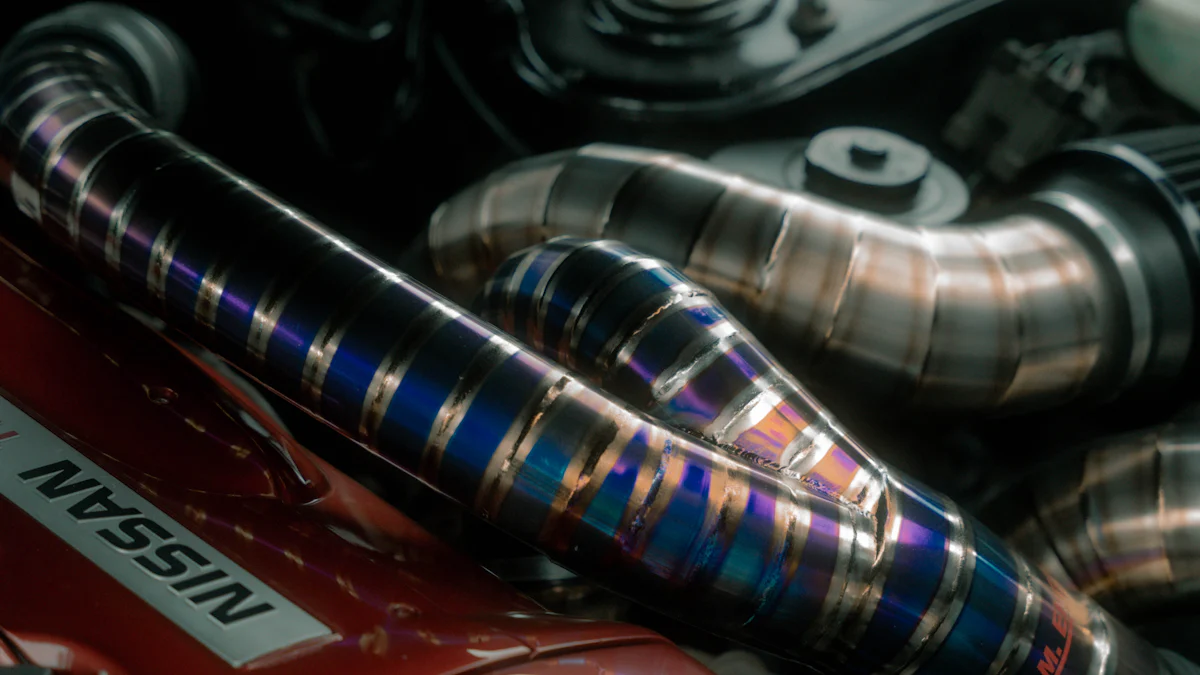
When considering an engine swap, the choice of LS swap exhaust manifolds plays a pivotal role in the overall performance. These manifolds are not merely components but rather strategic elements that can significantly impact the engine’s efficiency and power output. Understanding the nuances of selecting the right engine exhaust manifold is crucial for a successful swap. In this guide, we delve into the various types of LS swap exhaust manifolds, their benefits, drawbacks, and key selection criteria to ensure optimal performance in your project.
Types of LS Swap Exhaust Manifolds

Cast Iron Manifolds
When it comes to LS swap exhaust manifolds, Cast Iron Manifolds are a popular choice among enthusiasts. These manifolds offer a blend of durability and cost-effectiveness that make them a practical option for many engine swaps.
Benefits
- Durability: Cast iron is known for its robustness, ensuring that these manifolds can withstand the rigors of high-performance engines.
- Affordability: Compared to other materials, cast iron manifolds are often more budget-friendly, making them an attractive option for those looking to enhance their engine without breaking the bank.
Drawbacks
- Weight: One of the main drawbacks of cast iron manifolds is their weight. The heaviness of these manifolds can add extra load to the vehicle.
- Heat Retention: Cast iron has a tendency to retain heat, which can affect overall engine temperature if not managed properly.
Stainless Steel Manifolds
For those seeking a balance between performance and longevity, Stainless Steel Manifolds offer a compelling solution. These manifolds provide excellent resistance to corrosion and heat, making them ideal for high-performance applications.
Benefits
- Corrosion Resistance: Stainless steel is highly resistant to rust and corrosion, ensuring that these manifolds maintain their quality over time.
- Heat Management: Stainless steel has superior heat dissipation properties, helping to keep engine temperatures in check during intense operation.
Drawbacks
- Cost: Stainless steel manifolds are typically more expensive than their cast iron counterparts, which may deter budget-conscious builders.
- Complex Fabrication: Working with stainless steel requires specialized tools and skills, adding complexity to the installation process.
Custom Fabricated Manifolds
When off-the-shelf options don’t quite meet your requirements, Custom Fabricated Manifolds offer a tailored solution. These bespoke manifolds are designed to fit specific engine configurations and performance goals.
Benefits
- Tailored Fitment: Custom fabricated manifolds ensure a precise fit in your vehicle, eliminating clearance issues and optimizing performance.
- Performance Optimization: By customizing the design of the manifold, builders can fine-tune exhaust flow for maximum power output.
Drawbacks
- Costly: Custom fabrication comes at a premium price compared to mass-produced options, making it less accessible for budget builds.
- Lead Time: The process of designing and fabricating custom manifolds can be time-consuming, delaying project timelines.
Selection Criteria
Engine Compatibility
When it comes to LS swap exhaust manifolds, ensuring Engine Compatibility is paramount for a successful engine swap. Different LS series engines may require specific manifolds to optimize performance and efficiency, while other engine types might have unique requirements that need to be addressed.
- LS Series Engines: For LS series engines such as the 4.8, 5.3, and 6.0 variants, selecting the right manifold is crucial. Each engine has its own characteristics, and choosing a compatible manifold can enhance power output and overall engine performance.
- Other Engine Types: In cases where non-LS engines are being swapped, considerations for compatibility become even more critical. Adapting LS swap exhaust manifolds to fit engines with different configurations requires meticulous planning and attention to detail.
Space and Clearance
Space and Clearance considerations play a significant role in determining the suitability of LS swap exhaust manifolds for your project. The dimensions of the engine bay, along with potential fitment issues, must be carefully evaluated to ensure a seamless installation process.
- Engine Bay Considerations: Before selecting an exhaust manifold, assess the available space in the engine bay. Some LS engines may require modifications or adjustments to accommodate certain manifolds properly. Ensuring adequate clearance is essential for preventing interference with other components.
- Fitment Issues: Fitment issues can arise when installing aftermarket exhaust manifolds on non-OEM setups. It’s crucial to address any potential fitment challenges early in the planning stage to avoid complications during installation. Proper fitment ensures optimal performance and longevity of the exhaust system.
Performance Goals
Defining clear Performance Goals is key when selecting LS swap exhaust manifolds for your project. Whether you aim to boost power output or improve heat management, aligning your goals with the capabilities of the chosen manifold is essential for achieving desired results.
- Power Output: If increasing horsepower and torque is a primary objective, selecting a high-performance manifold designed for enhanced flow can make a significant difference. The design and construction of the manifold directly impact exhaust gas velocity and scavenging efficiency, influencing overall power gains.
- Heat Management: Efficient heat management is vital for maintaining optimal engine temperatures during operation. Choosing an exhaust manifold with superior heat dissipation properties can help prevent overheating issues and ensure consistent performance under demanding conditions.
Installation Tips

Preparation
When gearing up for the installation of LS swap exhaust manifolds, it’s essential to have the right tools at your disposal. Proper preparation can streamline the process and ensure a successful outcome.
Tools Required
- Wrench Set: A set of wrenches in varying sizes will be necessary to loosen and tighten bolts securely.
- Socket Set: Having a socket set with both metric and standard measurements can help you tackle different fasteners on the manifold.
- Torque Wrench: To ensure that bolts are tightened to the manufacturer’s specifications, a torque wrench is indispensable.
- Gasket Sealant: Applying gasket sealant can help create a tight seal between the manifold and the engine block, preventing leaks.
- Safety Glasses and Gloves: Protecting your eyes and hands during installation is crucial for safety.
Safety Precautions
Prioritizing safety throughout the installation process is non-negotiable. By following essential safety precautions, you can prevent accidents and injuries, ensuring a smooth workflow.
- Work in a Well-Ventilated Area: Adequate ventilation is crucial when working with exhaust components to avoid inhaling harmful fumes.
- Use Jack Stands: When working underneath the vehicle, always support it with jack stands to prevent accidents due to shifting or falling.
- Allow Cooling Time: Before starting the installation, make sure that the engine has cooled down sufficiently to avoid burns from hot components.
- Double-Check Connections: After installing the new manifold, double-check all connections and fasteners to ensure everything is secure before starting the engine.
Step-by-Step Guide
Following a systematic approach during the installation process can help you navigate through each step efficiently. From removing the old manifold to installing the new one, here’s a comprehensive guide to assist you along the way.
Removing Old Manifold
- Start by disconnecting any sensors or wires attached to the existing manifold.
- Loosen and remove all bolts securing the manifold to the engine block using an appropriate wrench or socket.
- Carefully detach the old manifold from the engine, taking note of any gaskets or seals that need replacement.
Installing New Manifold
- Cleanse the mounting surface on the engine block thoroughly to ensure proper adhesion for the new manifold.
- Place a new gasket on top of the mounting surface, aligning it with bolt holes for accurate placement.
- Position the new LS swap exhaust manifold onto the engine block, ensuring it sits flush against the gasket.
- Securely fasten all bolts in a crisscross pattern, gradually tightening them with a torque wrench as per manufacturer specifications.
Troubleshooting
Encountering issues during an installation is not uncommon but knowing how to troubleshoot effectively can save time and frustration. By understanding common problems and their solutions, you can overcome challenges seamlessly.
Common Issues
- Leakage Around Seals: If you notice leaks around seals or gaskets, check for proper alignment and tightness of fasteners before considering resealing.
- Misaligned Fitment: In cases where fitment seems off, verify that all components are compatible and correctly installed according to specifications.
Solutions
- Inspect for Damage: Thoroughly inspect all components for any signs of damage or wear that could compromise sealing integrity.
- Realign Components: If misalignment is detected, carefully realign components ensuring they sit flush together before re-tightening fasteners securely.
Popular Brands
Hooker
Product Range
Hooker, a renowned brand in the automotive industry, offers a diverse product range of LS swap exhaust manifolds tailored to meet the needs of performance enthusiasts. From cast iron to stainless steel options, Hooker provides high-quality manifolds designed to optimize engine efficiency and power output.
Key Features
- Precision Engineering: Each manifold from Hooker undergoes meticulous engineering processes to ensure precise fitment and optimal performance.
- Enhanced Durability: With a focus on durability, Hooker manifolds are built to withstand high temperatures and harsh operating conditions.
- Improved Exhaust Flow: The design of Hooker manifolds promotes efficient exhaust flow, contributing to enhanced engine power and responsiveness.
Hedman
Product Range
Hedman stands out in the market for its comprehensive product range of LS swap exhaust manifolds, catering to a wide range of vehicle applications. Whether you’re looking for cast iron or custom fabricated solutions, Hedman offers versatile options to suit various engine configurations.
Key Features
- Universal Compatibility: Hedman manifolds are designed for universal compatibility with different LS series engines, providing flexibility for engine swaps.
- Optimized Performance: The innovative design of Hedman manifolds focuses on optimizing exhaust flow and scavenging efficiency for improved engine performance.
- Easy Installation: Hedman manifolds feature user-friendly installation processes, allowing enthusiasts to upgrade their exhaust systems with ease.
Patriot Performance
Product Range
Patriot Performance takes pride in its specialized product range of cast gray ductile iron LS swap exhaust manifolds, specifically engineered for street rods and muscle cars. These manifolds combine quality craftsmanship with performance-oriented features to enhance the overall driving experience.
Key Features
- Tailored Design: Patriot Performance manifolds are meticulously crafted to provide a tailored fitment in classic vehicles, ensuring seamless integration into existing setups.
- Heat Management Solutions: With a focus on heat management, Patriot Performance manifolds help regulate engine temperatures effectively during extended operation periods.
- Enhanced Engine Sound: The unique design of Patriot Performance manifolds not only improves performance but also enhances the exhaust note, adding a distinctive sound profile to your vehicle.
Recap of LS Swap Exhaust Manifolds:
- The diverse range of LS swap exhaust manifolds, from cast iron to stainless steel and custom fabricated options, caters to various needs in engine swaps.
Importance of Proper Selection and Installation:
- Choosing the right manifold is crucial for optimizing engine performance and efficiency during swaps. Proper installation ensures seamless integration and long-term functionality.
Future Considerations and Recommendations:
- Considering factors like compatibility, space constraints, and performance goals can guide future manifold selections. Recommendations include thorough research and consulting experts for tailored solutions.
Post time: Jun-14-2024



